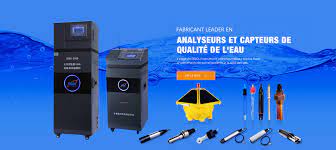Water quality analyzers provide the ability to monitor process chemistry, including water quality. This allows for process optimization and control, and also helps to ensure compliance with water regulations.
The analyzers are designed to monitor a wide variety of parameters, including physical, chemical and biological, as well as the laboratory measurements of pH, ORP, conductivity, dissolved oxygen, chlorine, salinity, ozone, corrosion rate and more.
Water supply
The quality of water can have a direct impact on human health, industrial and domestic use, and the environment. Regulations such as the EU Drinking Water Directive and US Environmental Protection Agency (EPA) set standards for enforcement of water quality.
To monitor the quality of water, a variety of parameters are used. They include chemical, biological, and organoleptic indicators.
There are also a range of contaminants that can affect water quality, including pesticides, metals, and minerals. Monitoring these pollutants can help identify their presence and potential harm.
In the United States, for example, the EPA requires local governments to publish a water quality report on their website. This information can be valuable for residents and businesses.
Another way to assess water quality is by testing it in a laboratory. Typically, water quality tests cover a wide range of chemical and biological parameters, including pH, COD, turbidity, EC, and TDS.
In addition to this, water quality can also be analyzed for other factors such as radioactive substances and bio-indicators. Those can have a significant effect on human health and should be monitored carefully.
Swimming pool
water quality analysis for a swimming pool is a critical step in keeping your pool healthy and clear. It is important to regularly check the water chemistry to avoid costly pool repairs and maintenance.
Whether using test strips, test kits, or digital testers, testing your pool water is a great way to keep track of the water’s condition. You can use one of these tools to determine how much chlorine your pool is producing, the pH level, total alkalinity, cyanuric acid, and metals like copper, iron, and manganese.
The type of test you use is determined by your budget and the accuracy you want for your testing. Test strips cost the least with a margin of error; a test kit costs more but has better accuracy and can include other water tests (like phosphates, nitrates, and metals); and a digital pool reader is the most accurate of all of them.
Free Chlorine, Combined Chlorine, and Total Chlorine can vary greatly over time and should be tested on a regular basis. If you find that Total Chlorine or Free Chlorine is too low, you may need to shock the pool water to rid it of inactive chloramines that sanitize far slower than Free Chlorine.
Ice factory
An ice factory is a plant that manufactures and stores ice for the local community. The ice is then used by restaurants and other businesses for their cooling requirements.
The ice factory can make a variety of types of ice. These include block, flake, tube and plate ice.
Some ice plants are designed to make dry subcooled ice, while others produce wet ice that must be defrosted before it is stored. Most ice plants use a defrosting system that heats water and then runs it on a sheet of ice to release the frozen material.
These defrosting systems can use up to 2 tonnes of water for every tonne of ice produced. However, it is possible to minimise consumption by making a closed circuit of the ice defrost water and reheating it between defrosts.
In order to ensure the safety of the water used for ice production, a yearly water test must be conducted. This test measures the levels of sodium, chlorides and nitrites in the water.








